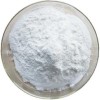Directly Compressible Dicalcium Phosphate and Calcium Phosphate Dibasic or Dicalcium Phosphate Manufacturer Exporter BP Ph Eur USP NF FCC Food Grade Manufacturer Exporter
Crystal Clear Products is a manufacturer exporter company manufacturing several chemicals including Directly Compressible Dicalcium Phosphate and Calcium Phosphate Dibasic or Dicalcium Phosphate and IP BP Ph Eur USP NF JP ACS AR Analytical Reagent FCC Food Grade, Pharmaceutical Chemicals at best prices. The group has offices and factories in India USA and UAE and toll manufacturers in China and sells to almost every country in the world.
The manufacturing facilities of our partner manufacturers have one or more of FDA-cGMP-GLP certification, ISO-9001 certification, Halal and/or Kosher certification, REACH pre-registration ISO-22000 HACCP. We also allow third party inspection of products offered. We can offer small quantities from laboratory and trial packs to large shipments of container loads of material.
Hazard Statements:
Not a hazardous substance or mixture according to Regulation (EC) No. 1272/2008.
This substance is not classified as dangerous according to Directive 67/548/EEC.
Not considered hazardous by the OSHA Hazard Communication Standard (29 CFR 1910.1200)
Signal Word: None
Transport Information
DOT USA, TDG Canada & ADR/RID Europe: Not dangerous goods.
IMO/IMDG: Not dangerous goods.
IATA/ICAO: Not dangerous goods.
You may please visit:
Calcium Phosphate Dibasic or Dicalcium Phosphate SDS of Manufacturers

CAS Number 7757-93-9, 65-85-0 and 7789-77-7 Calcium Phosphate Dibasic or Dicalcium Phosphate, EINECS: 231-826-1, Molecular Weight: 172.1, Chemical Formula: CaHPO4-2H2O
Calcium Hydrogen Phosphate BP Ph Eur Grade
Dibasic Calcium Phosphate BP Ph Eur Grade Specifications
Calcium Hydrogen Phosphate Dihydrate
CaHPO4,2H2O -- 172.1 -- CAS 7789-77-7
DEFINITION
Content:
Dibasic Calcium Phosphate 98.0 per cent to 105.0 per cent.
CHARACTERS
Appearance:
White, crystalline powder.
Solubility:
Practically insoluble in cold water and in alcohol. It dissolves in dilute hydrochloric acid and in dilute nitric acid.
IDENTIFICATION
A. Dissolve 0.1 g in a mixture of 5 ml of dilute nitric acid and 5 ml of water. The solution gives reaction of phosphates.
B. 5 mg gives reaction of calcium.
C. It complies with the limits of the assay.
TESTS
Solution S:
Dissolve 2.5 g in 20 ml of dilute hydrochloric acid, filter if necessary and add dilute ammonia until a precipitate is formed. Add just sufficient dilute hydrochloric acid to dissolve the precipitate and dilute to 50 ml with distilled water.
Carbonates: Shake 0.5 g with 5 ml of carbon dioxide-free water and add 1 ml of hydrochloric acid. No effervescence is produced.
Chlorides: Maximum 330 ppm.
Dissolve 0.5 g in a mixture of 1 ml of nitric acid and 10 ml of water and dilute to 50 ml with water. 15 ml of the solution complies with the limit test for chlorides.
Fluorides: Maximum 100 ppm.
Sulphates: Maximum 0.5 per cent.
Arsenic: Maximum 10 ppm.
Barium: To 10 ml of solution S add 0.5 ml of dilute sulphuric acid. After 15 min, any opalescence in the solution is not more intense than that in a mixture of 10 ml of solution S and 0.5 ml of distilled water.
Iron: Maximum 400 ppm.
Heavy metals: Maximum 40 ppm.
1 ml of 0.1 M sodium EDTA is equivalent to 17.21 mg of CaHPO4,2H2O.
We also offer Directly Compressible Dicalcium Phosphate
Dibasic Calcium Phosphate USP NF Grade Specifications
Dibasic Calcium Phosphate
CaHPO4 136.06
Phosphoric acid, calcium salt (1:1).
Calcium phosphate (1:1) CAS 7757-93-9
Dihydrate 172.09 CAS 7789-77-7
Dibasic Calcium Phosphate is anhydrous or contains two molecules of water of hydration. It contains not less than 98.0 percent and not more than 105.0 percent of anhydrous dibasic calcium phosphate (CaHPO4) or of dibasic calcium phosphate dihydrate (CaHPO4-2H2O).
Labeling: Label it to indicate whether it is anhydrous or the dihydrate.
Identification:
A: Dissolve about 100 mg by warming with a mixture of 5 mL of 3 N hydrochloric acid and 5 mL of water, add 2.5 mL of 6 N ammonium hydroxide drop wise, with shaking, and then add 5 mL of ammonium oxalate TS: a white precipitate is formed.
B: To 10 mL of a warm solution (1 in 100) in a slight excess of nitric acid add 10 mL of ammonium molybdate TS: a yellow precipitate of ammonium phosphomolybdate is formed.
Loss on ignition: Ignite it at 800 to 825 to constant weight: anhydrous Dibasic Calcium Phosphate loses between 6.6% and 8.5% of its weight, and the dihydrate form of Dibasic Calcium Phosphate loses between 24.5% and 26.5% of its weight.
Carbonate: Mix 1.0 g with 5 mL of water, and add 2 mL of hydrochloric acid: no effervescence occurs.
Chloride: To 0.30 g add 10 mL of water and 2 mL of nitric acid, and warm gently, if necessary, until no more dissolves. Dilute to 25 mL, filter, if necessary, and add 1 mL of silver nitrate. TS: the turbidity does not exceed that produced by 1.0 mL of 0.020 N hydrochloric acid (0.25%).
Sulfate: Dissolve 1.0 g in the smallest possible amount of 3 N hydrochloric acid, dilute with water to 100 mL, and filter, if necessary. To 20 mL of the filtrate add 1 mL of barium chloride. TS: the turbidity does not exceed that produced by 1.0 mL of 0.020 N sulfuric acid (0.5%).
Arsenic: The limit is 3 µg per g.
Barium: Heat 0.50 g with 10 mL of water, and add hydrochloric acid drop wise, stirring after each addition, until no more dissolves. Filter, and to the filtrate add 2 mL of potassium sulfate TS: no turbidity is produced within 10 minutes.
Heavy metals: the limit is 0.003%.
Limit of acid-insoluble substances: not more than 0.2% of acid-insoluble substances is found.
Limit of fluoride: [NOTE—Prepare and store all solutions in plastic containers.]: the limit is 0.005%.
We also offer Directly Compressible Dicalcium Phosphate
Calcium Phosphate, Dibasic FCC Food Grade Specifications
Dicalcium Phosphate
CaHPO4 Formula weight, anhydrous 136.06
CaHPO4-2H2O Formula weight, dihydrate 172.09
INS: 341(ii) CAS: anhydrous 7757-93-9
CAS: dihydrate 7789-77-7
DESCRIPTION
Calcium Phosphate, Dibasic, occurs as a white powder. It is anhydrous or contains two molecules of water of hydration. It is stable in air. It is insoluble in alcohol, is practically insoluble in water, but is readily soluble in dilute hydrochloric and nitric acids.
Function: Leavening agent; dough conditioner; nutrient; yeast food.
REQUIREMENTS
Labeling: Indicate whether it is anhydrous or the dihydrate.
Identification:
A. Dissolve about 100 mg of sample by warming it with a mixture of 5 mL of 2.7 N hydrochloric acid and 5 mL of water. Add 2.5 mL of 6 N ammonium hydroxide, drop-wise, with shaking, and then add 5 mL of ammonium oxalate TS. A white precipitate forms.
B. Add 10 mL of ammonium molybdate TS to 10 mL of a warm 1:100 aqueous solution in a slight excess of nitric acid. A yellow precipitate of ammonium phosphomolybdate forms.
Assay Anhydrous or Dihydrate: Not less than 97.0% and not more than 105.0% Dibasic Calcium Phosphate.
Arsenic: Not more than 3 mg/kg.
Fluoride: Not more than 0.005%.
Lead: Not more than 2 mg/kg.
Loss on Ignition Anhydrous: Between 7.0% and 8.5%; Dihydrate: Between 24.5% and 26.5%.
We also offer Directly Compressible Dicalcium Phosphate
Contact for Monograph, Uses, Matnfacturing Process, etc of Calcium Phosphate Dibasic or Dicalcium Phosphate and JP IP BP Ph Eur USP NF FCC Food AR ACS Reagent Grade Manufacturer Supplier Exporter
MANUFACTURER EXPORTER
MUMBAI 400009, INDIA. TEL: (OFFICE) 91-9322665100
info@manufacturerexporter.com
Copyright and Usual Disclaimer is Applicable
Last updated
11/19/2022
Manufacturer Suppliers Exporters at Wholesale Prices from India USA and around the Globe
Dried Aluminium Phosphate -- Calcium Glycerophosphate -- Diammonium Phosphate -- Dipotassium Phosphate -- Disodium Phosphate -- Monoammonium Phosphate -- Monopotassium Phosphate -- Monosodium Phosphate -- Tripotassium Phosphate -- Trisodium Phosphate --
Calcium Acetate -- Calcium Butyrate -- Calcium Borogluconate -- Calcium Chloride Fused Anhydrous Dihydrate Solution -- Calcium Chloride IP BP USP ACS AR Analytical Reagent FCC Food Grade -- Calcium Citrate -- Slaked Hydrated Lime Calcium Hydroxide BP USP IP ACS AR Analytical Reagent FCC Food Grade -- Calcium Lactate -- Calcium Lactate Gluconate -- Calcium lactobionate -- Calcium Bromo Lactobionate -- Calcium Glubionate -- D-Glucuronolactone -- D-Gluconolactone -- Calcium Malate -- Calcium Citrate Malate -- Calcium Magnesium Lactate Gluconate -- Calcium Pidolate -- Quick Lime Calcium Oxide USP IP FCC Food Grade Lumps Powder -- Calcium Propionate -- Calcium Saccharate -- Calcium Stearate -- Calcium Sulfate -- Calcium Undecylenate or Calcium Undecenoate -- Sodium Hydroxymethanesulfonate Formaldehyde Bisulfite
Calcium Carbonate -- Calcium Disodium EDTA -- Calcium Gluconate -- Calcium Glycerophosphate -- Calcium Levulinate -- Calcium Polystyrene Sulfonate or Calcium Polystyrene Sulphonate -- Calcium Phosphate Monobasic or Monocalcium Phosphate -- Calcium Phosphate Dibasic or Dicalcium Phosphate -- Calcium Phosphate Tribasic or Tricalcium Phosphate --






